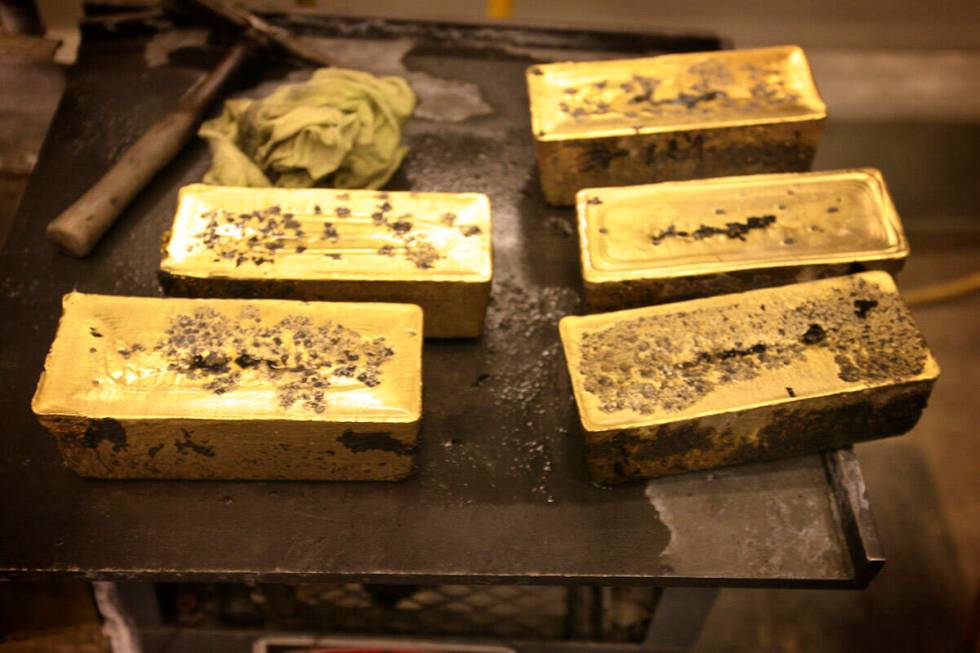Gold and mountains: Silver State facts that sound fake, but are true

People took to Reddit recently to share facts about Nevada that sound fake, but are actually true.
Here are seven weird facts about the 36th state that sound made up:
Nevada produces most of the nation’s gold
California may call itself the Golden State, but Nevada reigns supreme in gold production nationwide.
According to a 2021 report from the Nevada Division of Minerals, the Silver State produced 74 percent of the United States’ gold, and ranked fifth internationally in gold production behind China, Australia, Russia and Canada.
Nevada produced 4,502,365 troy ounces (a special measurement used for precious metals) of gold in 2021, which converts to 4,939,737.6 regular ounces.
Nevada also produced 6,218,415 troy ounces of silver in 2021, or 6,822,489.6 regular ounces.
A dead brothel owner won a Nevada Assembly race
In 2018, Dennis Hof won his race against Democrat Lesia Romanov for Assembly District 36, which includes all of Nye County and parts of Lincoln and Clark counties.
But, there was just one problem: Hof was dead.
Hof died less than a month earlier of a heart attack at the Love Ranch Vegas in Crystal at age 72. He was found naked and unconscious in his bed by adult film star Ron Jeremy, who then called 911 with one of Hof’s girlfriends for help.
Despite Hof’s death, under state law, he had to remain on the ballot for the election taking place the next month. The ballots had also already been printed for the election.
One month after the election, the Nye County Commission appointed Gregory Hafen II to replace Hof for the seat.
Reno is farther west than Los Angeles
Because of how California curves east toward the bottom of the state and Nevada’s slanted western boundary, Reno is actually farther west than Los Angeles by about 80 miles.
Nevada’s western border with California is one of the most surveyed borders in the United States, according to Nevada Magazine.
Nevada is the most mountainous state in the Lower 48
Even though Colorado is famous for its Rocky Mountains, the Silver State actually comes in first.
Nevada has over 300 named mountain ranges, with 42 named summits that are over 11,000 feet, according to Travel Nevada.
Nevada’s tallest peak is Boundary Peak, which sits at 13,140 feet.
Nevada telegraphed its entire constitution to get statehood
Nevada became the 36th state on October 31, 1864 (Halloween) after telegraphing the state constitution to Congress just days before the election.
The constitution was sent in Morse code on Oct. 26 that year from Carson City to Salt Lake City, then to Chicago and Philadelphia before finally reaching the War Department’s telegraph office in DC. Carson City did not have a direct link to DC at the time, according to the National Archives.
The full message took two days to reach the Capitol, and cost $4313.27 to send, which is about $83,675.44 adjusted for 2023 inflation.
The constitution had previously been sent by mail and sea, but would not reach the Capitol in time for the election. So, Nevada Territory Governor James Nye decided to send the whole thing by wire.
Statehood was rushed so that Nevada could add three electoral votes to contribute toward President Abraham Lincoln’s reelection, the State of Nevada’s website states.
Most of the Strip is not in Las Vegas
While most Strip casinos have “Las Vegas” on their address, many of them are not located within the City of Las Vegas.
Instead, most of the Strip is located in Paradise, an unincorporated area in Clark County.
While Las Vegas did attempt to annex the Strip, casino owners supported legislation to form unincorporated townships to avoid paying city taxes and fees.
Harry Reid International Airport, UNLV and Sunset Park are also located in unincorporated Clark County. However, the Fremont Street Experience, The Strat, and Summerlin are located in the city.
Blue jeans were invented in Nevada
Jacob Davis is credited with inventing blue jeans in Reno in 1871 after noticing the pants he made for miners couldn’t hold up against their harsh working conditions and tore constantly. Davis experimented with using metal fasteners in overalls made of a tough canvas material, which quickly became popular with northern Nevada miners.
Unable to pay for the patent himself, Davis reached out to businessman and German immigrant Levi Strauss, who was in San Francisco, and got a patent with Davis for the pants’ design.
Davis moved to San Francisco to mass produce the pants and form Levi Strauss & Co. In 1890, the company introduced blue denim, which was a more durable fabric than the canvas, and the pants became a hit, according to Smithsonian Magazine.
Contact Taylor Lane at tlane@reviewjournal.com. Follow @tmflane on Twitter.